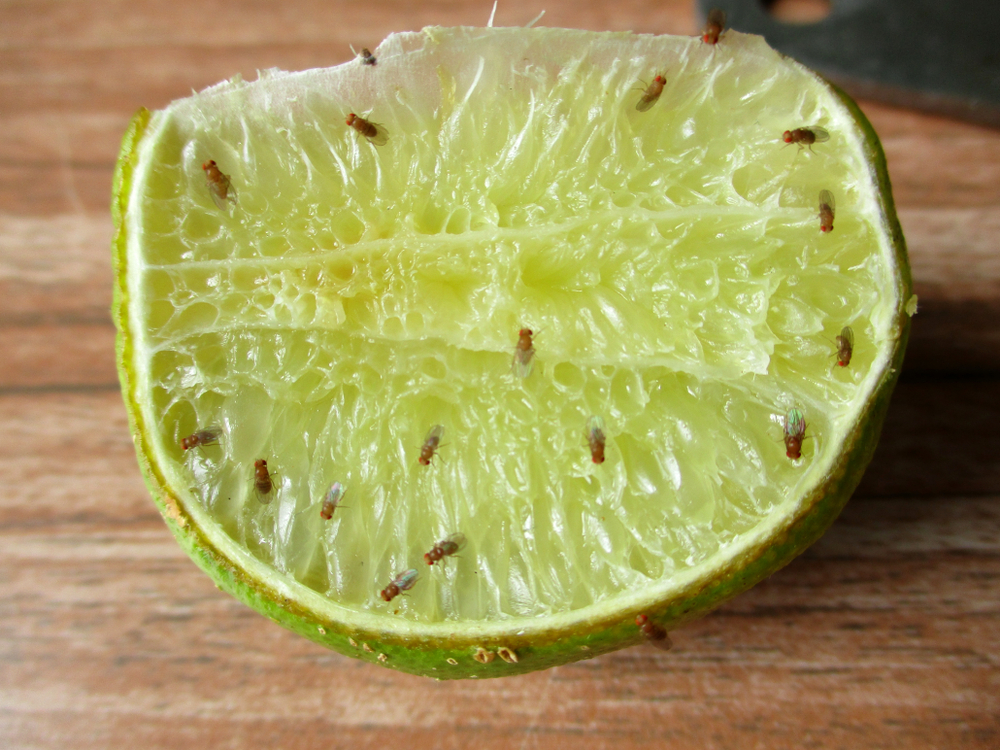
In the early days of the COVID-19 pandemic, while the rest of us were watching TV and baking banana bread, two Johns Hopkins University researchers took their minds off the health crisis by counting the brain cells of fruit flies and mosquitoes.
The researchers, Joshua Raji and Christopher Potter, found this the two animals averaged about 200,000 brain cells, mostly neurons, with about 10 to 15 percent non-neuronal cells, such as glial cells. (Glial cells are the brain’s connective tissue, providing a support network for neurons, although they also have some important metabolic functions.)
Compared to larger animals, that’s not a lot of neurons. Humans have approximately 86 billion neurons, and mice have about 12 billion. But don’t be too quick to write these little creatures off as fools. Fruit flies feel pain, have working memory, make predictions about the future, and even pause to think before they act (a skill not all humans have been able to master).
Read more: Do insects have feelings and consciousness?
The brain of a fly
In 2023, an international team published research that drawn the complete “connectome” (brain synaptic wiring diagram or what we might call a connectivity map) of a fruit fly larva.
According to the study, they chose this particular animal because it is small but has a “relatively complex brain” and a “rich behavioral repertoire.” They discovered that the way the neurons of the fruit fly larva communicate with each other is quite complex. Instead of just sending messages from axon of one neuron to dendrite of another neuron—which is the typical pattern of neuronal activity—almost half of the fly’s neuronal connectivity involved sending messages axon to axon, dendrite to dendrite, or dendrite to axon.
The researchers also found that the fly’s neurons are not as specialized as previously thought. In fact, most neurons perform many tasks, responding to different sensory cues. When the researchers looked not only at how many neurons there were, but also at how those neurons interacted, the insect’s brain appeared to be far more complex than its size would suggest. Fruit fly brains may be small, but they are efficient. The researchers hope that this understanding of the connectome will help shed light on the wiring of human brains, which share many genes with fruit flies.
Evolutionary connection
Frank Hirt is an expert in evolutionary neuroscience at King’s College London. For decades, he and his colleagues have studied how neural circuits form and function in vertebrates and insects.
“Flies, crabs, mice, humans: they all experience hunger, need sleep, and prefer a comfortable temperature, so we hypothesized that there must be a similar mechanism regulating these behaviors,” Hirth said in 2013 article for his work. “We were amazed to find how deep the similarities are, despite the differences in size and appearance of these species and their brains.”
Hurt continues research indeed supported the view that although the brains of insects and humans are structurally very different, they share many of the genetic mechanisms involved in the brain regions that control behavior. These surprisingly deep similarities, he says, are likely due to a common ancestor that may have lived half a billion years ago.
Are insects conscious?
Does this mean that insects are conscious? This is another question that is difficult to answer, even for animals about which we know much more than insects. But it’s a question scientists and philosophers are already asking struggling with. What we’re learning about fruit fly brains suggests that insects are a lot more like us than we once thought, and that may include consciousness.
Read more: How intelligence is measured in the animal kingdom

